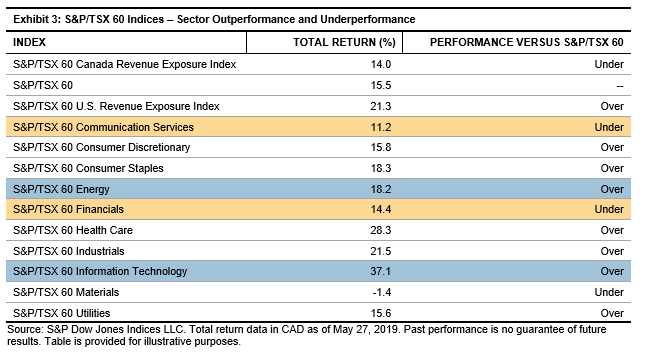There was a notable reversal of fortunes across the commodities complex in May. The S&P GSCI was down 8.2% for the month but remained up 8.5% YTD. The Dow Jones Commodity Index (DJCI) was down 3.6% in May and up 3.7% YTD, reflecting its lower energy weighting. A sharp correction in petroleum prices combined with ongoing weakness in industrial metal prices weighed on the broad commodities indices’ performance over the month. The U.S. Administration’s penchant for utilizing trade restrictions as a negotiation tool for everything from lowering illegal immigration, to penalizing the unauthorized use of intellectual property, to reestablishing dominance over its closest neighbors has undoubtedly muddied the fundamental supply and demand dynamics of the majority of commodities markets.
Oil prices fell abruptly in May, as trade wars fanned fears of a broad economic slowdown. The S&P GSCI Petroleum dropped 13.8% in May, when the supply issues that had preoccupied the energy markets for much of the year gave way to concerns regarding the resilience of demand and the long-term implications of the reinvigorated trade dispute between the world’s two largest economies, the U.S. and China. Oil market participants will now turn their attention to the upcoming OPEC meeting, scheduled for June 25, 2019, where it is becoming increasingly likely that there will be an agreement among the OPEC+ members to continue, or even deepen, production cuts with the lofty goal of maintaining global oil market stability.
The S&P GSCI Industrial Metals gave back all of its YTD gains in May, falling 5.5% for the month. The S&P GSCI Copper and S&P GSCI Zinc led the way down, falling 9.1% and 9.2%, respectively, in May. These two metals are highly correlated with trade war sentiment, which deteriorated markedly over the month. Zinc continued to fall from its highs in Q1 2019 after revised expectations for a supply surplus this year, with China’s zinc output forecast rebounding by 5.3%. Associated with the trade war, heightened risks of a global growth slowdown also weighed on industrial metals, with China’s manufacturing PMI reading below expectations at 49.4 in May.
With the present ambiguity across commodity and equity markets, it is somewhat surprising that gold only attracted lackluster interest from investors in May. The S&P GSCI Gold was up 1.7% over the month, leaving its YTD performance only marginally positive. The U.S. dollar slowed its year-long appreciation, moving sideways in May and adding to the list of reasons why the gold market has been relatively featureless.
The S&P GSCI Agriculture rallied 9.7% in May. Having severely lagged the energy and industrial metals markets during the first four months of the year, a spark was lit under the grain markets in May. Wet and rainy conditions have severely delayed the grain planting season in the U.S., and this encouraged a level of excitement in the markets that has not been witnessed for a number of years. The most recent USDA crop report showed that only 58% of the corn crop had been planted by May 26, 2019, down from 92% last year and from the 90% five-year average. Both the S&P GSCI Corn and S&P GSCI Wheat were up 18% for the month. In contrast, the S&P GSCI Cotton fell 11.1% in May, plagued by the trade conflict between China and the U.S. China is the largest importer and user of raw cotton and the U.S. is a top buyer of Chinese textile products.
The frenzy in the grains market spilt over into the livestock markets in May, but with the opposite effect, given that grain is a major component of livestock feed. The S&P GSCI Livestock was down 6.5% in May.
The posts on this blog are opinions, not advice. Please read our Disclaimers.


























































